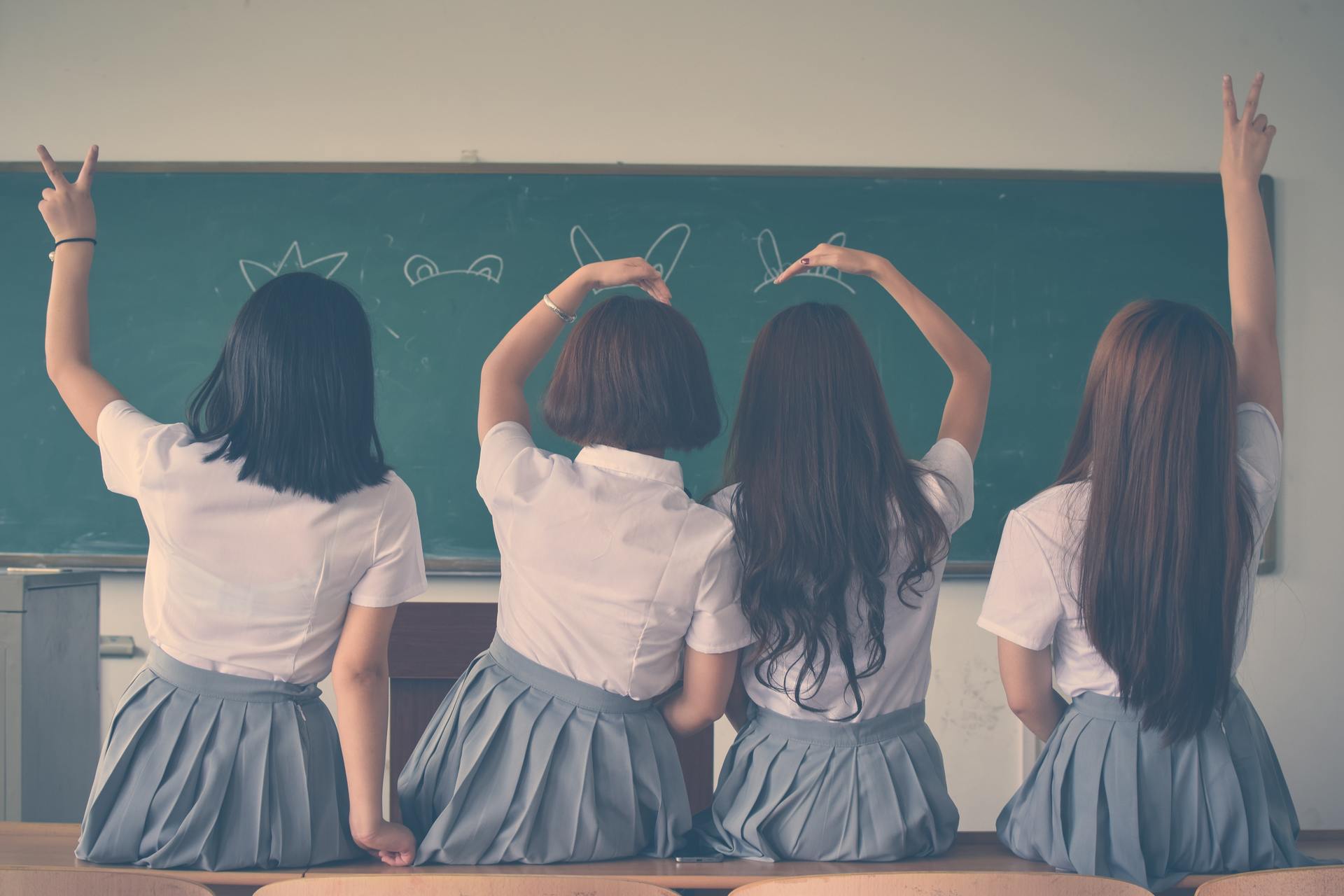School
5 min Read
Touchy Subject: Should school uniforms be mandatory for public schools?

August 18, 2016
School
5 min Read

August 18, 2016


Once the domain of private schools, uniforms are gaining traction in public schools, too.
I’m a uniform survivor. Everyday I wore a kilt, blazer and knee socks to school. Like my peers, I mostly hated it. I did, however, appreciate one thing about that scratchy, icky-green, perspiration-inducing, polyester outfit: having one less thing to think about on harried mornings. So, as an adult, whenever confronted with the uniform debate, I was firmly on the fence.
That is, until my kids’ school held a unis-or-no-unis referendum. I was forced off the fence and after much deliberation, I voted “no”.
For some kids, school is already a nuisance – unless you count recess and gym. Why give students another reason to feel negative about school? Yes, a fraction of students do like uniforms, but research shows that most do not.
Secondly, there’s the question of comfort. Many children are fussy about clothing. Certain fabrics rub them the wrong way (pun intended), and often buttons, zippers, belts and/or ties can be annoying. Restrictive clothing and youngsters are not a good mix. My own boys used to feel uncomfortable wearing anything besides elastic-waisted pants and soft cotton tees. Girls crave comfort too, and some have an additional beef. Many feel awkward in dresses and skirts, a mainstay of most uniforms. Uncomfortable kids are not in the best frame of mind for learning.
I had practical reasons, too. Although proponents claim uniforms save us money, the math didn’t add up. If you’re a careful shopper, regular school clothes cost less than uniforms. And let’s remember that a weekend and after-school wardrobe is still required. Plus, the knees in jeans hold out a lot longer than those in twill trousers.
Finally, I realized how counter-intuitive it was to add uniforms at a time when our schools were promoting an appreciation of diversity. Don’t uniforms encourage conformity? What about students who don’t fall into binary gender categories? Choosing between a boys’ and a girls’ uniform is just one more challenge for these kids. Uniforms are another barrier to letting kids just be who they are.
School uniforms have evolved from the days of the starched white button down and pleated skirt. In fact, many public Catholic high schools in Ontario have phased out kilts, in favour of pants (or long shorts) and a golf shirt, emblazoned with the school’s crest. Many public elementary and secondary schools are following suit.
There are many benefits to uniforms beyond neatness and school unity, says Joan Grundy, a recently retired high school administrator from Kitchener, Ont. who dealt with uniforms on a daily basis. “It helps reduce the sense of the ‘haves’ and the ‘have nots’ in the school community,” she says. “Uniforms are an equalizer because everyone is dressed the same way, instead of students from more affluent families wearing expensive brand-name fashions.”
Having the latest styles in school hallways inevitably leads to debate about what is too tight, too revealing, or too offensive (in terms of slogans and imagery). Many uniform-policy schools have regular “spirit wear days” where students can wear approved clothing from a school team or club. “Civvies days”, where students pay a small donation in order to wear street clothes for the day, can be held as part of a school fundraising drive or charitable effort.
In the school, uniforms provide an added element of safety, allowing staff to quickly recognize outside visitors and keep the school more secure. At home, they save time and hassle in the morning, eliminating negotiations or arguments about the appropriateness of an outfit. While some students gripe initially about the uniform, Joan points out that most students come to appreciate it. “It saves them from worrying about what to wear each day,” she says. “And, by the time they reach the senior grades, they are mature enough to realize that wearing trendy clothes is not what makes you popular or acceptable.”
Uniforms add a sense of order and community in any school environment. Whether in private or public school, a uniform creates a sense of social equality and belonging, and makes students begin and end each day as a group. Uniforms also lessen “home stress” for parents and students alike. Kids don’t need to worry about fitting in based on what they wear and report a decrease in their stress levels related to having the right clothing. Uniforms allow for kids to be celebrated as who they are rather than judged by what they wear. Kids report a sense of safety and calm when they are in schools that require uniforms – and can still show their individuality and express themselves. It’s a simple choice as far as I’m concerned, school uniforms are a positive element of any learning environment.
Originally published in ParentsCanada magazine, August/September 2016.